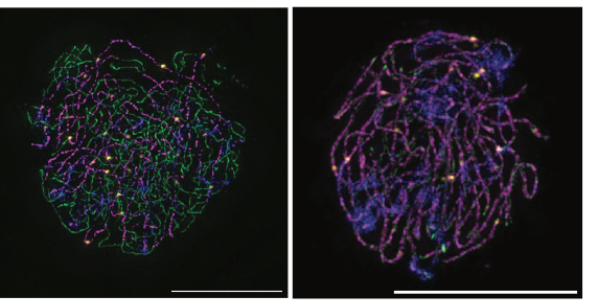Improved synapsis promotes meiotic stability in genome duplicated Arabidopsis arenosa
A recent "PNAS" paper by the Bomblies group (IMPB) demonstrates that key meiotic processes involved in early chromosome pairing, need to be modified to stabilize meiosis (the cell division that creates spores or gametes) in polyploids, which have four instead of two copies of every chromosome.

Polyploids are frequent in nature and crops, and represent an interesting tool for crop improvement due to their strong resistance to stresses such as drought. Yet, newly formed polyploids are often sterile, or nearly so. How do they recover fertility? One major set of issues arises in meiosis, the special cell division that gives rise to spores, or gametes (eggs and sperm) in eukaryotes, including humans. Due to DNA recombination, gametes or spores contain shuffled versions of the parent’s genomes, but this causes problems for new polyploids, where all the chromosome copies can get tangled and compromise fertility. Yet polyploids are common among crops and wild species, and these are fertile. How do they become fertile again?
This study compares diploid, newly tetraploid, and established tetraploid (the latter is fully fertile, the former is not) to understand the challenges that cause meiotic problems, as well as the evolved solutions that allow polyploid chromosome segregation. The results show that a major issue for newly formed polyploids arises in an early stage of chromosome pairing called synapsis. Synapsis keeps homologs in tight alignment as crossovers mature. This work shows that the dynamics of synapsis (which is critical for proper pairing and recombination) are defective in new polyploids, and improved dramatically in evolved polyploids, even exceeding the diploids, and that this is a key factor in regularizing their chromosome segregation.
Link to the paper in "external page PNAS".